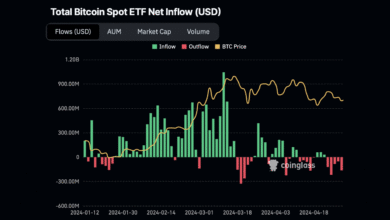Walmart Stock Drop: Bill Simon Questions the Market Reaction

Walmart stock drop has left many analysts and investors scratching their heads, particularly in light of the company’s recent performance. Despite raising its annual sales and earnings forecast, the retail giant saw a surprising 4.5% decline in its stock price, making it the largest loser in the Dow on the day. Bill Simon, the former U.S. CEO of Walmart, expressed his bewilderment over this downturn, stating, “It was about as good of a quarter as any retailer could have in any environment.” As experts delve into the retail market analysis, questions arise about consumer sentiment and the overall impact of Walmart stock performance on the broader consumer industry. With insights from Simon and industry analogs, the conversation around this unexpected stock drop continues to unfold, highlighting the complexities of today’s market conditions.
In the ever-evolving landscape of retail, the recent decline in Walmart’s stock has sparked significant discussion among industry experts and stakeholders. This surprising turn of events comes as the retail chain announced its updated earnings forecast, painting a curious picture amidst a successful quarter. As Bill Simon, who once helmed Walmart U.S., pointed out, the company has achieved remarkable revenue growth and margins, challenging the rationale behind such a market reaction. As analysts conduct a thorough retail market analysis, they aim to uncover consumer industry insights that could elucidate this perplexing stock performance. Overall, this situation embodies the unpredictable nature of consumer sentiment and investment strategies within the retail sector.
Understanding the Walmart Stock Drop
The recent stock drop experienced by Walmart has left many financial analysts and investors scratching their heads. As reported, Walmart shares fell by 4.5%, making it the largest loser on the Dow, despite the company raising its earnings forecast for the year. This discrepancy between positive operational performance and negative stock movement has often perplexed market watchers, with suggestions that short-term investor sentiments may be steering the company’s stock price rather than its long-term growth potential.
Several factors can contribute to such stock market behavior. For instance, Bill Simon, the former Walmart U.S. CEO, noted that investors might have reacted to Walmart’s first earnings miss in over three years, largely attributed to unusual expenses like restructuring and insurance claims. This pattern highlights how investor psychology plays a crucial role in stock performance, even when the company reports favorable revenue growth and market share expansion.
Bill Simon’s Insights on Walmart’s Market Position
Bill Simon, who previously held the position of Walmart U.S. CEO, shares valuable insights regarding the retailer’s current market standing. He emphasizes the importance of Walmart’s strategy in attracting cost-conscious consumers while navigating external challenges like tariffs. Simon articulates that the company’s rising sales and better-than-expected earnings projections should be viewed as indicators of robust performance, no matter the temporary fluctuations in stock value.
Moreover, Simon’s perspective underscores a broader shift in consumer behavior. He argues that the combination of low prices and convenience provided by Walmart makes it a formidable player in the retail market. Given that the consumer industry is increasingly gravitating towards convenience and affordability, Simon believes that as long as Walmart can uphold its profitability and growth forecasts, it will continue to thrive robustly in the competitive landscape.
Retail Market Analysis: The Bigger Picture
A thorough retail market analysis reveals that companies like Walmart are navigating a complex landscape influenced by economic changes, consumer trends, and competitive pressures. Despite the stock drop, analysts suggest that Walmart’s business model remains strong due to its ability to deliver low-priced goods to customers, a feature amplified by the current economic climate which sees many consumers prioritizing value over brand loyalty.
Furthermore, Walmart’s proactive approach in raising its sales and earnings forecast even amidst external pressures indicates strong management confidence. This behavior suggests that rather than succumbing to market fears, Walmart is strategically positioning itself for long-term growth, enabling it to appeal to both loyal and new customers in today’s evolving retail space.
Walmart’s Earnings Forecast and Investor Sentiment
The discussion around Walmart’s earnings forecast reveals significant insights into investor sentiment and expectations. After the retailer announced a solid earnings report alongside an optimistic forecast, many expected the stock to rise, leading to confusion when it instead faced a decline. This investor sentiment reflects a potential disconnect between earnings outcomes and market reactions, hinting that investors may still be cautious following minor setbacks.
Investor reactions following earnings reports can often be erratic, driven by immediate interpretations of data rather than the underlying business health. For Walmart, while the short-term outlook might appear challenging given the stock drop, long-term prospects rest on its ability to Sustain sales growth and market share, hallmarks of a resilient business model in the competitive consumer industry.
Consumer Industry Insights: Walmart’s Resilience
Insights into the consumer industry reveal that Walmart’s resilience can be attributed to its unique position in the market. As a leading retailer, Walmart’s strategies in maintaining low prices and extensive product offerings resonate well with today’s cost-sensitive consumers, especially in a landscape characterized by uncertainty. Bill Simon highlights the effectiveness of these strategies in retaining customer loyalty against rising competition.
Moreover, the ability to provide a broad selection of groceries and general merchandise under one roof not only enhances customer convenience but also strengthens Walmart’s appeal during fluctuating economic periods. Consumer trends indicate an escalating preference for one-stop shopping experiences, and Walmart seems well-positioned to capitalize on this preference, reinforcing its status as a retail giant.
Exploring Walmart’s Competitive Edge
In exploring Walmart’s competitive edge, one must recognize its extensive supply chain and logistics capabilities. This infrastructure enables Walmart to keep operational costs low while ensuring product availability for customers, a crucial factor in maintaining market share against online and brick-and-mortar competitors. These strengths are vital, especially when considering the impact of economic factors such as tariffs and inflation on retail prices.
Bill Simon notes that while some might focus on external challenges, Walmart’s inherent advantages provide it with a buffer during adversity. The company’s focus on increasing operational efficiencies allows it to offer competitive pricing, which is essential in today’s economy. Thus, Walmart’s unique positioning and strategic advantages appear to be well-suited to sustain its industry leadership moving forward.
Long-term Growth Prospects for Walmart
Despite the recent fluctuations in stock price, Walmart’s long-term growth prospects remain promising. Analysts are increasingly optimistic about Walmart’s strategies to integrate technology into their operations, enhance customer experience, and expand online retail offerings. These initiatives not only address changing consumer preferences but also position Walmart to capture future market growth in the evolving retail landscape.
Bill Simon’s perspective reiterates that as long as Walmart mantains its trajectory in revenue and margin growth, it stands to remain a powerful entity in the retail sector. This belief is further supported by Walmart’s proactive adjustments in its operations to meet consumer demand, reaffirming confidence among investors for sustained progress despite short-term setbacks.
Navigating Market Uncertainties and Challenges
The retail sector, including giants like Walmart, is continuously navigating an array of market uncertainties and challenges. Factors such as economic fluctuations, changes in consumer preferences, and emerging competition necessitate agile corporate strategies. As Bill Simon highlighted, the temporary stock drop should not overshadow the substantial operational successes Walmart has achieved, reinforcing the importance of resilience and adaptability in the face of adversity.
Walmart’s ability to adapt to these market dynamics, through innovative practices and strong fiscal management, sets the stage for overcoming challenges. By focusing on core strengths and responding proactively to competitive threats, Walmart can enhance its market position and secure future profitability, which is crucial for navigating an ever-changing retail landscape.
Looking Ahead: Walmart’s Strategic Focus
Looking ahead, Walmart’s strategic focus will likely revolve around enhancing customer experience and expanding its digital presence. As traditional retail faces heightened competition from e-commerce, Walmart’s initiatives to refine its online offerings and improve in-store experiences will be pivotal in attracting new customers while retaining existing ones. Bill Simon’s insights into these strategies validate Walmart’s commitment to adapting its business model in response to dynamic market conditions.
Meanwhile, the effectiveness of these strategies will be monitored closely by investors seeking confidence in Walmart’s continued growth. With a strong emphasis on operational efficiency and customer value, Walmart appears to be gearing up for a sustained competitive edge in the retail market, promising a sound long-term outlook amidst the volatility of short-term stock movements.
Frequently Asked Questions
What triggered the Walmart stock drop despite a positive earnings forecast?
The Walmart stock drop can be attributed to investor reactions following the company’s first earnings miss in over three years. This miss was primarily due to one-time expenses related to restructuring costs and insurance claims, which some investors may have interpreted more negatively, overshadowing the overall positive performance and raised sales guidance.
How does Bill Simon view the recent Walmart stock performance?
Bill Simon, former Walmart U.S. CEO, expressed confusion over the Walmart stock performance, stating it was a strong quarter for the retail giant. He noted the company’s ability to maintain low prices while effectively managing costs, signifying a robust outlook despite the stock’s drop.
Did Walmart’s earnings miss impact its stock drop?
Yes, Walmart’s earnings miss was a significant factor in the stock drop. Analysts suggest that investors became overly focused on this one-off issue, which contrasted with the company’s overall positive results and guidance, leading to a decline in stock performance.
What were the main points raised by Bill Simon regarding Walmart’s earnings?
Bill Simon highlighted that Walmart’s revenue growth and margin improvement are strong indicators of its success. He argued that the stock drop was unwarranted given that the company is excelling in the current retail environment, with no significant impacts from tariffs despite concerns.
Is Walmart well-positioned in the retail market despite the stock drop?
Absolutely. According to Bill Simon, Walmart’s blend of low prices and convenience continues to attract consumers, ensuring its strong position in the retail market. As long as Walmart can sustain its revenue figures, the company is expected to thrive, regardless of transient stock fluctuations.
What is the current sentiment around Walmart’s future performance?
The current sentiment around Walmart’s future performance is optimistic. Despite the recent stock drop, analysts and industry experts like Bill Simon believe that Walmart’s strategy to raise its sales and earnings guidance while managing costs places it in a strong position for continued growth in the retail market.
How significant was Walmart’s stock drop in the context of the overall market?
Walmart’s stock drop was notable as it marked a 4.5% decrease, making it the largest loser in the Dow on the day of the earnings announcement. This decline is surprising, given the overall positive metrics shared by the company, indicating a disconnect between stock performance and actual business health.
What insights can be drawn from the retail market analysis regarding Walmart’s stock behavior?
Retail market analysis suggests that while short-term stock fluctuations can occur due to investor sentiment or knee-jerk reactions to earnings reports, Walmart’s fundamental strengths, such as revenue growth and customer attraction through pricing strategies, underpin a more stable long-term outlook.
How can investors interpret the recent Walmart stock drop amidst a strong earnings report?
Investors should view the recent Walmart stock drop as a temporary reaction rather than a reflection of the company’s overall health. Focusing on Walmart’s raised earnings forecast and ongoing competitive advantages, it may represent a buying opportunity for long-term investment as the retail market evolves.
What lessons can be learned from Walmart’s recent earnings performance and stock volatility?
Walmart’s recent earnings performance demonstrates that strong operational results do not always guarantee positive market reactions. Investors may want to consider the broader economic context and look beyond immediate stock fluctuations to understand the retail landscape and investment potential.
| Key Point | Details |
|---|---|
| Stock Drop Reason | Despite raising sales and earnings forecast, Walmart’s stock dropped 4.5%. |
| Former CEO’s Perspective | Bill Simon described the drop as perplexing, citing strong quarterly performance. |
| Market Performance | Walmart was the largest loser in the Dow on the day of the stock drop. |
| Tariffs Impact | Simon stated that tariffs had no impact on Walmart’s business. |
| Future Outlook | If Walmart maintains growth, Simon believes it will remain a strong company. |
| Stock Performance Year-to-Date | Walmart shares have increased by 8% in 2025, but are 7% below the February record high. |
Summary
The Walmart stock drop has raised questions among investors and analysts alike. Despite a solid quarterly performance and an optimistic forecast from former U.S. CEO Bill Simon, the stock fell by 4.5%, leading to its position as the largest loser in the Dow. Factors potentially influencing this counterintuitive reaction include investors’ concern over a missed earnings target, attributed to one-time adjustments that don’t signify systemic issues. However, with revenues climbing and steady consumer attraction to Walmart’s competitive pricing, many believe the company’s fundamentals remain strong, positioning it well for future growth. Ultimately, understanding the dynamics behind the Walmart stock drop reveals both the challenges and potential opportunities that lie ahead.




